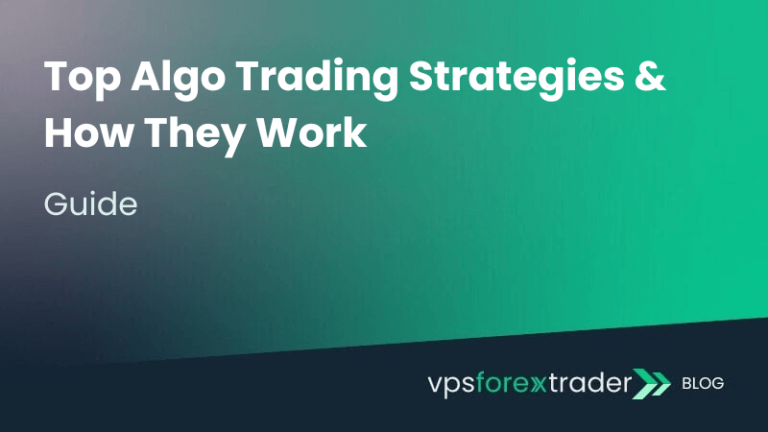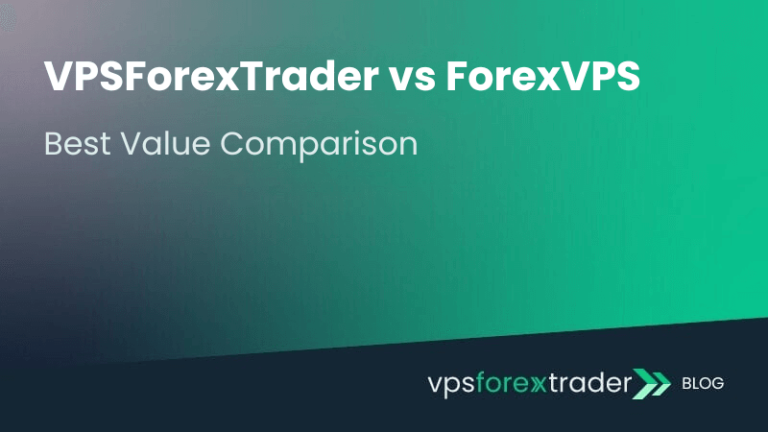If you’re looking for new ways to invest your money, forex trading (FX) can be an option for both beginner and seasoned traders. Forex trading, short for foreign exchange trading, is based on the buying and selling of currencies in the global foreign exchange market.
The forex market is the largest financial market in the world, with an estimated value of $2.4 quadrillion. Before you dive headfirst into trading, we have prepared a guide on forex trading and everything you need to know about this type of investment.
What is Forex Trading?
Forex traders buy and sell currencies on the global foreign exchange market. Traders exchange one currency for another, trading in pairs like USD/EUR or GBP/JPY. If this sounds confusing at first, don’t worry.
In fact, most people have traded forex at some point. If you’ve ever traveled abroad and exchanged your currency for the local one, you have done a forex trade. Of course, at that time you probably didn’t try to strategically score a better rate.
Unlike stock markets, forex trading operates 24 hours a day, five days a week – from Sunday to Friday. To start trading, you need to find a reputable broker, create an account, download a trading platform, and make your first exchange.
The main goal of trading forex is to benefit from currency fluctuations and exchange them at the best possible moment for a stronger currency. Unlike investing in exchange-traded funds (ETFs) like the S&P 500, which might take years and huge investments to bring significant profit, with forex you can start with as little as $10 and almost instantly get the returns of your trade.
How Does Forex Trading Work?
Forex trading isn’t attached to any particular stock exchange. Instead, it’s monitored by a decentralized global network of banks and financial institutions. This might give you more flexibility but can also lead to more volatility.
Here’s a basic rundown of how forex trading works:
- You choose a currency pair to trade. One of the most popular options is EUR/USD, but you might choose to trade your local currency against another.
- You decide how much money to trade and when. If you’re trading EUR to USD, it means you’re selling euros for U.S. dollars. Let’s say you have 100 EUR, and the exchange rate is 1.1800 USD per EUR. You sell 100 EUR and receive 118 USD.
- If, fortunately, the market moves in your favor and the EUR/USD rate drops to 1.1750, you can buy back the 100 EUR with a gain. At the new rate of 1.1750, you need: 100 EUR × 1.1750 = 117.50 USD.
- You received 118 USD when you sold, and you spent 117.50 USD to buy back, so your profit is 118 – 117.50 = 0.50 USD.
Of course, this is a small profit, but every gain counts, especially in trading. However, this is a favorable scenario. It can go both ways. You should always keep in mind the risks, your leverage, and unexpected market changes that can affect your investments. To make trading easier, you can also choose a Forex VPS hosting. This way, you can have a dedicated server just for you to avoid network interruptions.
How to Trade Forex: Tips and Strategies
Tips and strategies for successful forex trading for beginners are similar to any other investment.
The first step: educate yourself
To understand how to trade forex, you should learn as much as possible about forex markets, trading strategies, and risk management. You can read blogs about forex trading, watch YouTube videos, attend courses, and network with other traders to understand the intricacies of the market.
Step two: practice with virtual money
Some forex trading platforms offer demo accounts where you can practice trading with virtual money. It’s a great opportunity to learn trading skills without any risks.
Step three: choose a reliable broker
Before importing any funds to any trading account make sure to find a reliable broker. Check their offering, conditions, regulations, and compliance. Also, read online reviews to be sure your money is safe. If you’re using VPS for a better trading experience, also find the best method for you. Most traders choose between Forex VPS vs. regular Windows VPS.
Step four: manage your risks
Like with any other investment, you shouldn’t go too big. The best strategy is to diversify your portfolio and never risk more than 1-2% of your trading capital on a single trade. As a beginner, you might also want to start with low sums. As mentioned before, starting with $10-100 just to dip your toes in can be a safer strategy in the long run.
Common Forex Trading Terms and Definitions
As a beginner forex trader, you should learn a few terms and definitions to help you feel more confident among the pro traders. Here are a few:
- Pip or percentage in point: The smallest price move in forex, usually the fourth decimal place. For example, if the EUR/USD moves from 1.1800 to 1.1801, that’s a one-pip movement.
- Spread: The difference between the buy (ask) and sell (bid) price of a currency pair. For example, if the EUR/USD bid price is 1.1800 and the ask price is 1.1801, the spread is 1 pip.
- Base and quote currency: In EUR/USD, EUR is the base and USD is the quote currency.
- Long/short: Going long means buying; going short means selling.
- Slippage: The difference between the expected and actual trade execution price. It can be positive or negative.
- Swap: Interest paid or earned for holding a position overnight.
- Volatility: The degree of variation in a trading price over time.
- Liquidity: The ease with which a currency can be bought or sold.
You might also notice that experienced traders have nicknames for the currency pairs. Here’s what they mean:
- EUR/USD – The Fiber
- GBP/USD – The Cable
- AUD/USD – The Aussie
- USD/JPY – The Gopher
- EUR/GBP – The Chunnel
How Forex Trades Translate into Profits and Losses: Quantitative Examples Explained
Understanding the theory of forex trading is one thing, but to trade effectively, you also need to grasp the math behind the trades. How much does one pip cost you? How do you size your trades? What’s your profit or loss in dollar terms?
Here are clear examples that show exactly how forex trades are calculated and evaluated:
1. What Is a Pip and What Is It Worth?
A pip (short for “percentage in point”) is the smallest standard price move a currency pair can make. For most currency pairs, 1 pip = 0.0001.
Example:
If EUR/USD moves from 1.1050 to 1.1060, that’s a 10-pip move.
The value of 1 pip depends on your position size and the currency pair traded.
Pip Value Example (Standard Lot):
- Trading 1 standard lot (100,000 units) of EUR/USD:
- 1 pip = $10
Pip Value Example (Mini Lot):
- Trading 0.1 lot (10,000 units):
- 1 pip = $1
Pip Value Example (Micro Lot):
- Trading 0.01 lot (1,000 units):
- 1 pip = $0.10
2. How to Calculate Profit and Loss (P&L)
Let’s say you buy EUR/USD at 1.1000 and sell it at 1.1050 for a 50-pip gain.
With a 1 Standard Lot:
- 50 pips × $10 per pip = $500 profit
With a 0.1 Mini Lot:
- 50 pips × $1 per pip = $50 profit
If the trade had gone the other way, this would instead be your loss.
3. Position Sizing Formula
Position sizing helps you determine how many lots to trade based on your risk tolerance.
Formula:Position Size = (Account Risk per Trade) ÷ (Stop Loss in Pips × Pip Value)
Example:
- Account size: $5,000
- Risk per trade: 2% → $100
- Stop loss: 25 pips
- Pip value (per mini lot): $1
→ Position Size = $100 ÷ (25 × $1) = 4 mini lots (or 0.4 standard lots)
This ensures you’re not risking more than $100 on that trade.
4. Margin and Leverage Example
Leverage magnifies your position size without requiring the full amount upfront.
Example:
- Leverage: 1:100
- You want to open a 1 standard lot trade = 100,000 units
- Required margin = 100,000 ÷ 100 = $1,000
With just $1,000 in margin, you control a $100,000 position, but the risk and reward still apply to the full $100,000 trade.
5. Tracking Trade Outcome: A Full Example
Let’s walk through a complete trade:
- Pair: GBP/USD
- Buy entry: 1.2700
- Stop loss: 1.2670 (30 pips)
- Take profit: 1.2760 (60 pips)
- Position: 0.5 standard lots
- Pip value: $5 per pip
If the trade hits TP:
→ 60 pips × $5 = $300 profit
If it hits SL:
→ 30 pips × $5 = $150 loss
This gives you a 2:1 reward-to-risk ratio, with clear numbers to plan and evaluate your trade.
Building a Beginner-Friendly Rule-Based Trading Plan
Knowing how forex works is only half the equation, having a set of rules to guide your trades is what separates disciplined traders from impulsive ones. A rule-based strategy removes emotion from decisions, ensures consistency, and helps you track what works.
Here’s how to create a simple yet effective rule set for entering and exiting trades with confidence:
1. Define Your Trading Style and Timeframe
Start by choosing a trading style that fits your personality and schedule:
- Scalping: Fast trades, 1–5 min charts (high pressure, more time required)
- Day Trading: In and out within the day, using 15–60 min charts
- Swing Trading: Holding trades for days, using 4H or daily charts
Each style will affect your risk, frequency, and required discipline.
2. Create Clear Entry Rules
A good trade should only be entered when your entry criteria are met exactly, no guessing or gut feeling.
Example Entry Rule (Trend-Following Strategy):
- Pair is above the 50-period moving average
- RSI > 50
- Price breaks recent resistance with a strong bullish candle
- Enter on candle close, not mid-formation
All conditions must be true before you enter. If one is missing, skip the trade.
3. Set Your Stop-Loss Rule
A stop-loss protects your capital by automatically closing trades if they go too far against you. Make it part of your system, not a manual reaction.
Common SL methods:
- Fixed pip stop (e.g., 30 pips below entry)
- ATR-based stop (Average True Range measures volatility)
- Below recent swing low/high
Example:
“If buying, place stop-loss 10 pips below the most recent swing low.”
4. Define Take-Profit or Exit Rules
Profits should be taken strategically, not emotionally.
Common TP methods:
- Fixed reward-to-risk ratio (e.g., 2:1 → if risking 30 pips, target 60)
- Trailing stop that moves with price to lock in gains
- Exit at key resistance/support zones
Example:
“If risk is 25 pips, set take-profit 50 pips above entry (2:1 ratio).”
5. Include Filters or No-Trade Zones
Avoid bad trades by building in filters:
- No trading 15 minutes before/after major news releases
- Skip trades during low-volume sessions (like Fridays after noon)
- Trade only when the spread is under a certain threshold
These small rules help you avoid unnecessary risk.
6. Example Rule-Based Strategy (Template)
Setup: 15-minute chart, EUR/USD
Style: Day trading, trend-following
- Entry: Price above 50 EMA + RSI > 55 + bullish engulfing candle
- SL: 15 pips below recent swing low
- TP: 30 pips above entry (2:1 R:R)
- News filter: Skip if high-impact news is due within 30 min
You can journal trades based on these rules and evaluate performance over time.
A rule-based trading plan gives you structure, reduces emotional errors, and allows you to track your edge over time. Instead of asking “should I enter?” you ask “does this meet my rules?”
Start simple. Test. Refine. And let your rules do the heavy lifting, not your emotions.
Essential Tools and Resources to Start Executing Forex Trades
Understanding the forex market is the first step, but taking action requires the right tools. Whether you’re a total beginner or building your first strategy, using the right resources can make the difference between random guessing and intentional growth.
Here’s a curated list of beginner-friendly tools to help you practice, execute, and improve your trading efficiently:
1. Practice Safely with a Demo Trading Platform
Before risking real capital, use a demo account to test strategies in real market conditions with zero financial risk. These platforms simulate live environments, including spreads and price movement.
Recommended Demo Platforms:
- MetaTrader 4 (MT4) – Most widely supported by brokers
- MetaTrader 5 (MT5) – More advanced tools and assets
- cTrader – Clean interface with fast execution
- TradingView (paper trading) – Great for charting and visual backtesting
You can open a demo account through most major brokers within minutes.
2. Use a Trading Journal to Track and Learn
A trading journal helps you record your trades, analyze your behavior, and continuously refine your system. It’s essential for identifying patterns, both good and bad.
Options for Journaling:
- Excel/Google Sheets – Fully customizable (track entry, exit, reason, result, notes)
- Edgewonk – Premium tool with analytics and emotional tracking
- TradeLogs – Focused on tax reporting but usable for tracking
- Notion or Obsidian – Flexible for journaling both trades and mindset
What to Log:
- Entry/exit prices
- Screenshot of setup
- Result (in pips/$)
- Reason for trade
- Emotional state before/after
Over time, your journal becomes your most powerful learning tool.
3. Calculate Pip Values, Position Sizes, and Margin Needs
Before entering any trade, you should know:
- How much a pip is worth for your trade size
- How large your position should be based on your risk
- How much margin is required based on your broker’s leverage
Free Online Tools:
- Myfxbook Pip Calculator
- BabyPips Position Size Calculator
- Forex.com Margin Calculator
- DailyFX Trade Size Calculator
Using these tools takes the guesswork out of risk management and ensures that every trade is aligned with your capital and goals.
4. Backtest with Historical Data
Once you develop a rule-based strategy, test it on historical charts to see how it performs.
Backtesting Tools:
- TradingView – Manual backtesting with bar replay
- Forex Tester 5 – Dedicated desktop software for realistic simulation
- MT4/MT5 Strategy Tester – Built-in engine for automated strategies (EAs)
Backtesting helps validate your edge before real-money exposure.
5. Set Up a VPS (Virtual Private Server) if Trading Automated Systems
If you plan to run Expert Advisors (EAs) or want 24/7 execution stability, especially across time zones or during high volatility, consider using a Forex VPS.
Benefits:
- Keeps your platform running even when your computer is off
- Reduces latency to your broker
- Minimizes platform crashes or connection loss
Choose a provider with low latency to your broker’s server region.
FAQ
What is a forex trader?
A forex trader is a person or entity that participates in the foreign exchange market. They buy and sell currencies, as well as analyze the market. A forex trader can be an individual, investing for their own profit, or a professional trader, working for banks, hedge funds, or large corporations.
What are the most traded forex pairs?
EUR/USD, GBP/USD, USD/JPY, and USD/CHF.
What are the risks involved in forex trading?
- Market risk due to fluctuations in currency values.
- Leverage risks when small market movements lead to large losses quickly.
- Interest rate risk as interest rates increase or drop across the world.
- Fraud risks when you trade with poorly regulated brokers.
There are many more risks involved in forex trading. So before making any decision, make sure you can manage risks without losing too much money or going into debt.




